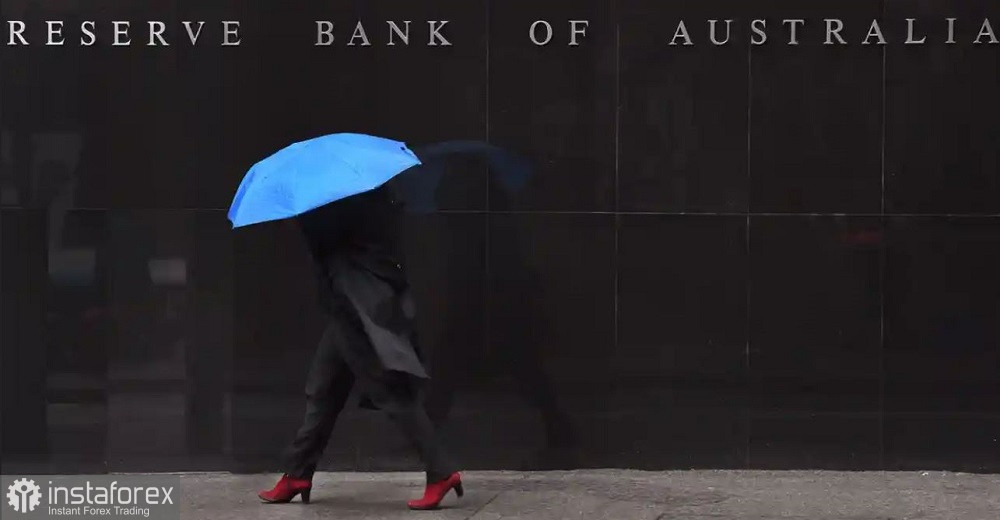On June 6, the Reserve Bank of Australia will announce the results of its meeting. Before the meeting, the AUD/USD pair tried to break through the resistance level of 0.6640 It is the average line of the Bollinger Bands indicator that coincides with the Kijun-sen line on the daily chart. However, it retreated to 65th pattern. Bulls are likely to succeed only amid a drop in the greenback or a rate hike by the RBA tomorrow.

For example, the two-day rise of the AUD/USD pair at the end of last week mainly occurred amid a decline in the US dollar after improved risk appetite. Default fears also abated. It stimulated demand for risk assets. Hence, the greenback faced bearish pressure. The pair appreciated by 150 pips. Having risen from 0.6485 to the swig high of 0.6641, AUD/USD failed to climb higher. It needs new drivers for further growth. This is why bulls are anticipating the RBA meeting. The majority of analysts suggest that the central bank will keep the rate unchanged. However, they also do not exclude a surprise. Some economists are confident that the RBA may raise the key rate.
RBA could hike rate amid high inflation
The main reason for further tightening is high inflation. Last week, the Consumer Price Index for April was released. Contrary to the forecasts about the decline in the indicator, it grew significantly. Analysts had predicted a drop of 6.2%. However, the index rose to 6.8% on a monthly basis. It has been consistently decreasing for three months - January, February, and March but in April it advanced again
A little earlier, annual and quarterly inflation data was unveiled. These reports also showed an increase although they also reflected a downtrend. In annual terms, the Consumer Price Index fell to 1.4% in the first quarter versus the forecast reading of 1.3%. In quarterly terms, the indicator came out at 7.0% versus the consensus estimate of 6.8%.
In May, the Australian regulator raised the interest rate by 25 points after the April pause. RBA policymakers made it clear that further prospects for tightening monetary policy have not been determined yet. The published minutes of the May meeting confirmed the cautious approach of the RBA. They stated that an additional rate increase may be required in the future but it will depend on the economy and inflation.
Persistently high inflation increases the likelihood of a hawkish move by the RBA. However, labor data indicates the chance of a pause. According to the latest report, the unemployment rate in Australia rose to 3.7% versus the forecast reading of 3.5%. The number of employed people in April decreased by 4,000, while analysts predicted an increase of almost 30,000. This indicator declined for the first time since January of this year. The most important macroeconomic report turned out to be weak, reflecting not only a fall in employment but also an increase in unemployment.
Thus, the economic reports are quite mixed ahead of the RBA's June meeting. It is quite difficult to predict the outcome of the June meeting despite the fact that the majority of analysts are betting on a pause.
Analysts' forecasts
According to UOB Group analysts, the RBA will keep the key rate at 3.85% in June. At the same time, they admit that there is a certain risk that the central bank may raise the interest rate one more time. Inflation remains significantly above the target level and the economy is still resilient.
The majority of economists (22 out of 30) surveyed by Reuters last week predicted that the RBA would keep the interest rate at 3.85% on June 6. The remaining 8 economists factored in a 25 basis point rate hike. Traders of interest-rate futures piled into fresh bets on a rate hike, pricing in a one-in-three chance.
More than half of the respondents (18 out of 28) anticipated a rate in the second half of the year. The key rate is likely to reach the level of 4.10% or higher by the end of autumn. The remaining 10 respondents expect the rate to remain at 3.85%.
Conclusion
In my opinion, the probability of another rate hike following the June meeting is very high. The Reserve Bank of Australia may catch market participants off guard in June just as it surprised investors in May. Back then, economists also expected a pause. Given the previous forecasts, the RBA's hawkish decision will boost the aussie. The AUD/USD pair may break through the resistance level of 0.6640. This is the average line of the Bollinger Bands indicator that coincides with the Kijun-sen line on the daily chart. It could also test 0.6690 (the lower limit of the Kumo cloud on the same timeframe) with a subsequent attempt to reach the 67th pattern.
If the RBA takes a pause in June, the movements of the AUD/USD pair will depend on the US currency.
Given the uncertainty over the RBA's decision, it would be better to take a wait-and-see approach.





















